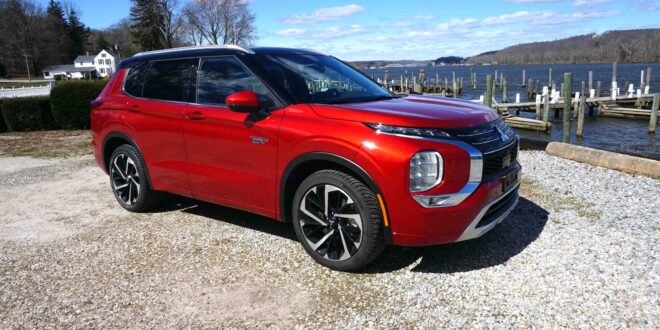EAST HADDAM, CT – At first, I was taken aback by the window sticker on the 2024 Mitsubishi Outlander PHEV. It read $51,835. After the initial shock wore off, I looked up the most recent average new car price. It’s now $48,759, according to Kelley Blue Book.
Hmm, wait a minute, that’s not too far off. And, after all, it was a more cost-intensive hybrid with the higher SEL trim package. So I set aside my preconceived notion of where Mitsubishi stands in the automotive hierarchy and decided to evaluate the Outlander with an open mind.
I knew there had to be a reason why this PHEV is the world’s number one selling plug-in hybrid SUV, according to “Green Car Journal,” and I was determined to find out why.
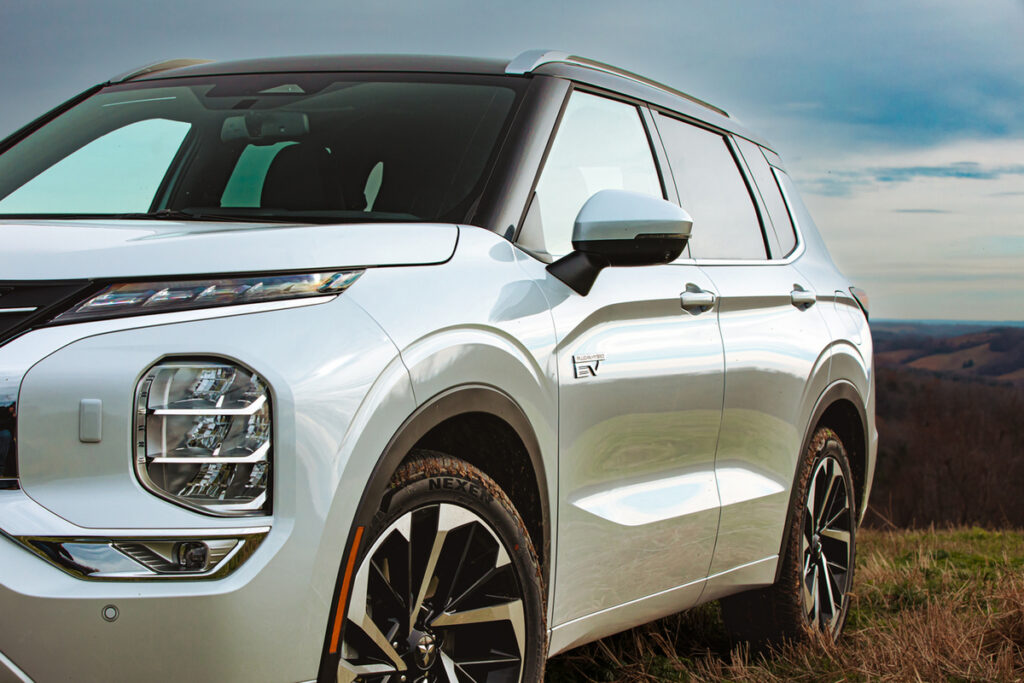
Mitsubishi is now part of what’s known as the Renault-Nissan-Mitsubishi Alliance and this latest Outlander is clearly all the better because of it. The French-Japanese strategic relationship was intended to pool development efforts and cross-share resources to the competitive advantage of all partners, while maintaining individual brand identities. Nissan took controlling interest (34%) of Mitsubishi in 2016.
Instead of going it alone, there’s a lot of Nissan Rogue underneath the Outlander. Both it and the Outlander ride on a shared platform with a 106.5-inch wheelbase. It’s said that the same Continuously Variable Transmission (CVT) is also specified for both. But the Mitsubishi is tuned toward more engaged drivers while the Nissan is relegated for the mass market. If the CVT is any indication, they clearly succeeded.
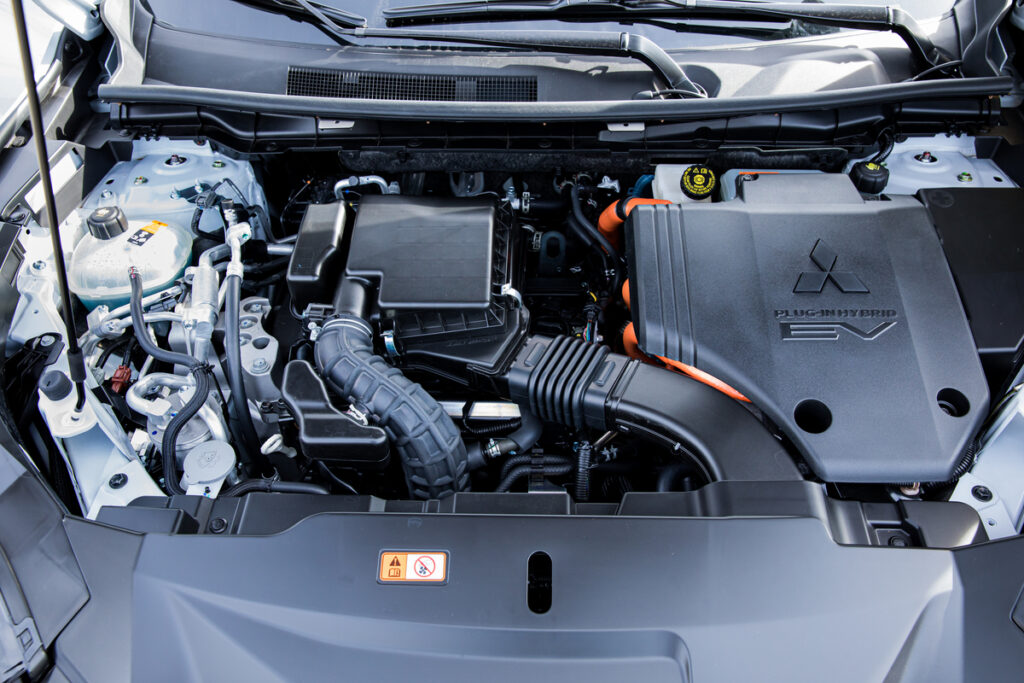
The Outlander PHEV includes a 2.4-liter, four-cylinder engine with 248 combined horsepower via supplementary, twin electric motors. The model has what Mitsubishi calls Super All-Wheel Control (S-AWC), which includes seven drive modes for utmost control and maneuverability for all road and weather conditions.
A sweet and smooth set of hot-off-the-press, low profile, next generation Bridgestone Blizzak mud and snow tires, specifically designed for luxury vehicles, were fitted and proved to be superlative in the purely dry conditions that I experienced.
(Note: this is a $350 premium tire on a bread-and-butter Outlander. Obviously, Mitsubishi’s kindly overdelivering here to the benefit of the buyer. )
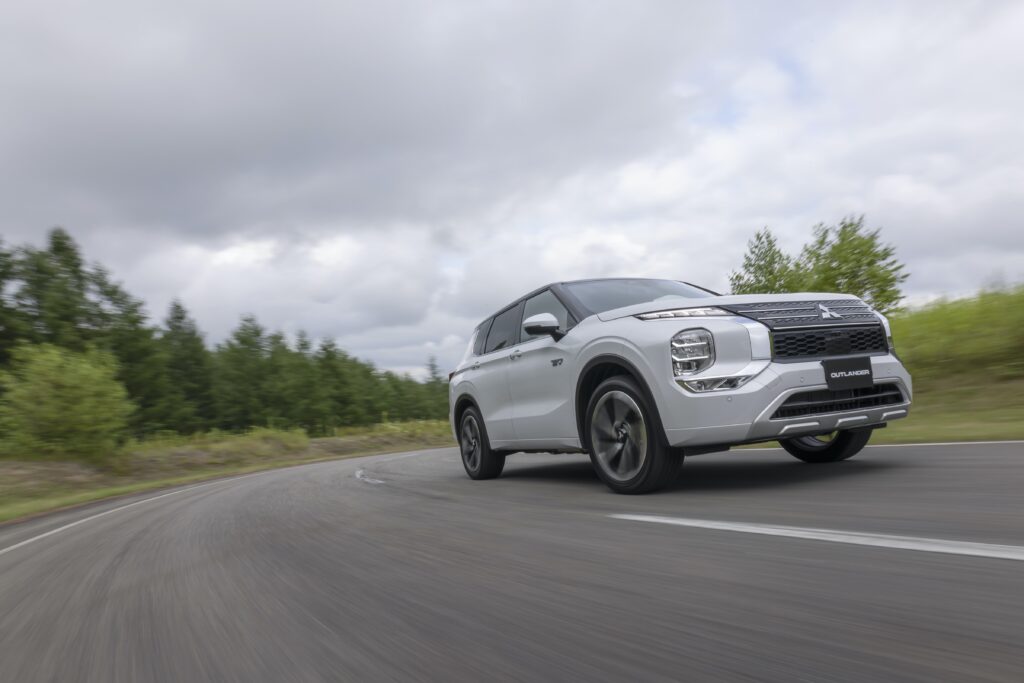
The chassis and powertrain put the emphasis on the driver, which I can attest to, and the Mitsubishi’s styling is more sport than utility. The Outlander is bold and distinctive with a concentration on horizontal design elements that the company calls “intrepid.”
The front-end aesthetic is its most controversial consideration. Mitsubishi specifically designed the leading “Dynamic Shield Illumination” system to convey an image of strength and confidence. It certainly has presence.
The Outlander’s overall architecture makes it just right for an average, everyday existence. It’s not too big, nor is it too small. It’s comfortable and roomy enough with seating for seven and includes a stow-and-go (lies flat) third row seat (though it’s minimal), while the second row (heated) can be adjusted fore and aft.
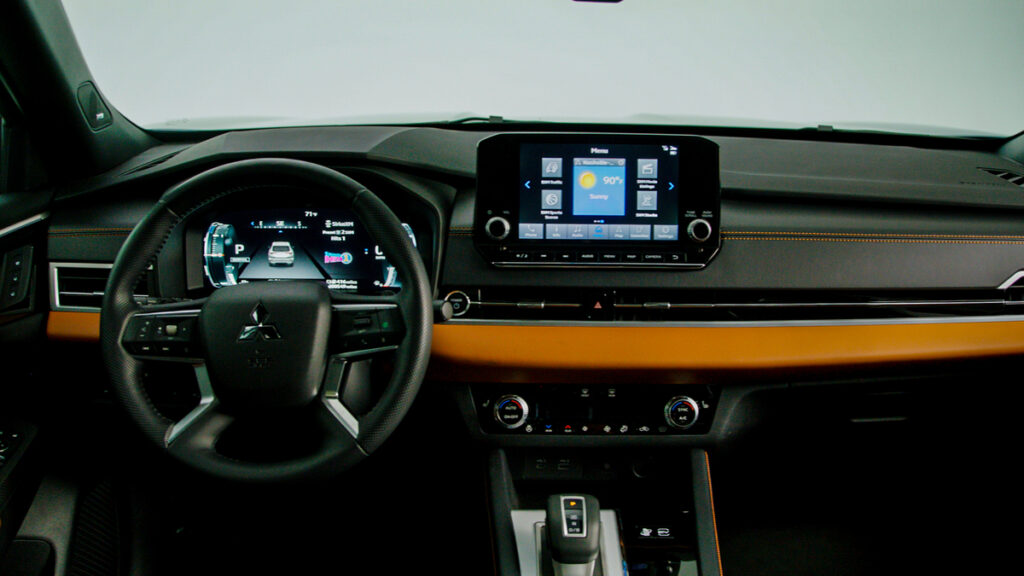
There’s a 12.3-inch Full Driver Digital Display and 9-inch touchscreen that’s intuitive enough so you don’t need an electrical engineering degree to adjust the radio.
A Forward Collision Mitigation system is further supplemented by everything from pedestrian detection to active stability control, plus land change warning, blind spot detection, rear automatic braking and trailer stability assist. It tows 1,500 lbs.
Then, of course, there’s Apple CarPlay, Android Auto and Bluetooth, with 24 months of free Mitsubishi Connect Subscriptions/Services, too.

Also included on the SEL that I drove was a top-of-the-line $2,700 premium package that added a Panoramic Power Sunroof, luxurious color contrasting quilted synthetic leather (with massaging) seating and door surfaces plus a heated steering wheel, a Bose® sound system, a 10.8-inch Heads Up Display and more.
It proved to be a desirable assortment of goodies for the price. On the flip side, a $995 upcharge for Red Diamond paint with a black roof, $205 for a rear tonneau cover and another $195 for a Welcome Package that included a Touch Paint Pen, Floor Mats and an Owner’s Manual Binder (which didn’t fit in the glovebox) seemed a bit opportunistic.
As a plug-in hybrid electric vehicle (PHEV), the Outlander operates on all-electric (EV) exclusively for the first 38 miles or so, before switching over to gasoline power. In total, the PHEV can deliver up to 420 miles of combined range.
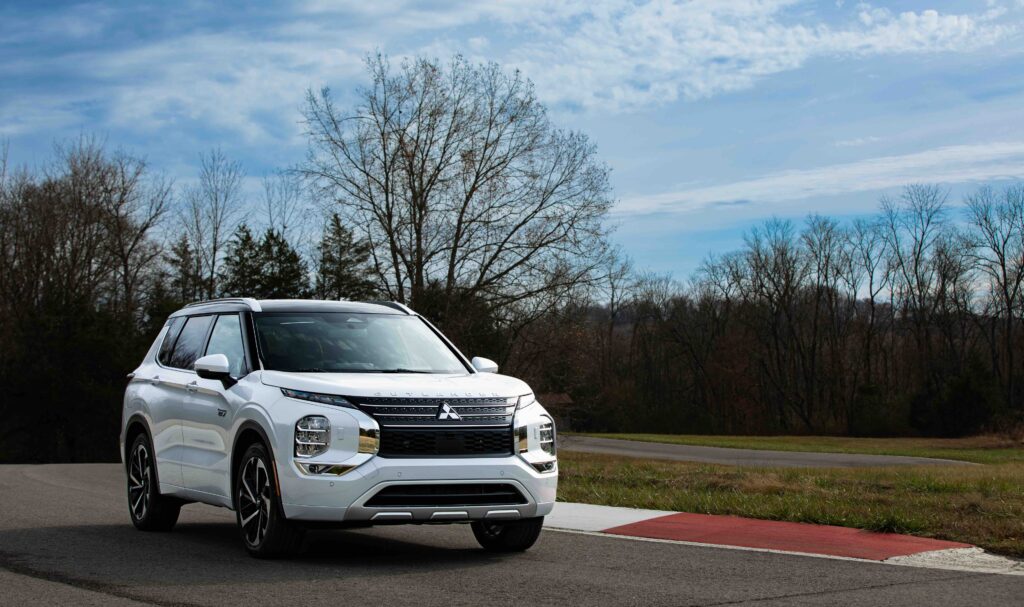
At the present time, the Mitsubishi Outlander is more exclusive in Connecticut than a Lexus. You can only buy such an outlier – though competitors are catching up with their own PHEVs – at three dealers. Some might consider that an inconvenience, but I look at it as an opportunity to avoid seeing yourself coming and going. (That’s coming from a Saab/Fiat/Citroen owner).
By the way, the Mitsubishi PHEV also includes a 10-year/100,000-mile Limited Powertrain Warranty, a la Korean Hyundai/Kia.
Having driven one a few years back, it’s clear that Mitsubishi has instilled a conscientious, Japanese ethic of continuous improvement and enhanced quality within the 2024 Outlander PHEV sport utility (SUV). The brand has regrouped and is ambitiously fighting a tough fight. They deserve more attention. Now I get it.
 RIDE-CT – Classic Cars Celebrating Classic Cars in Connecticut
RIDE-CT – Classic Cars Celebrating Classic Cars in Connecticut

